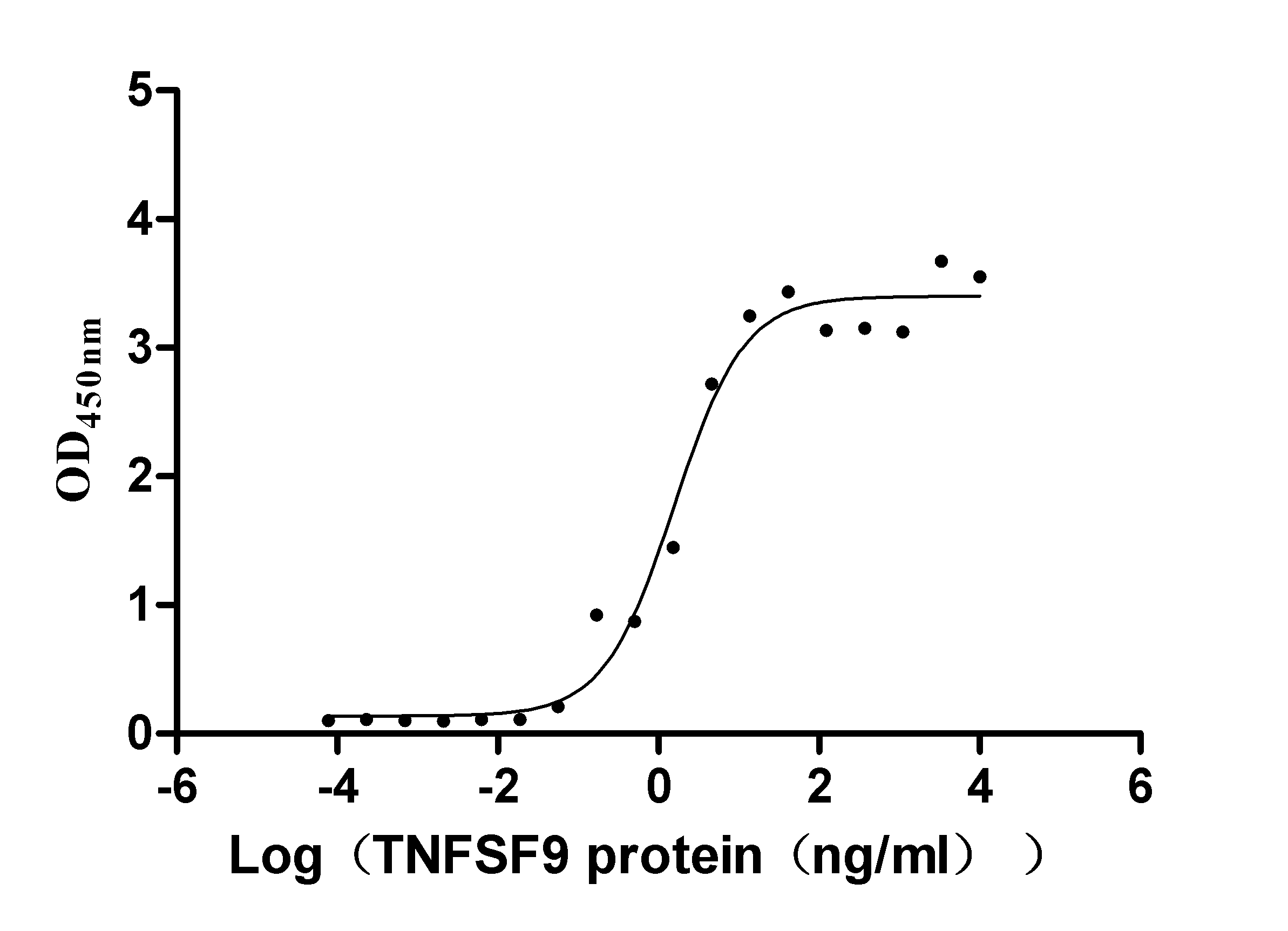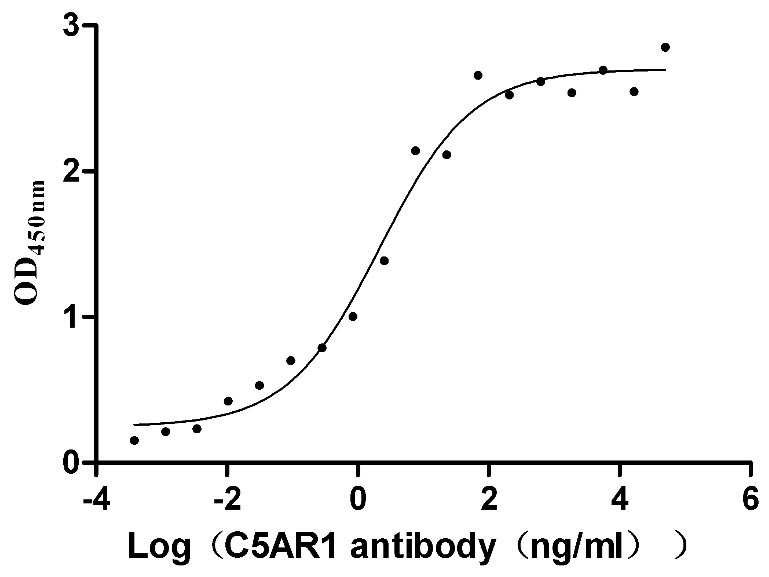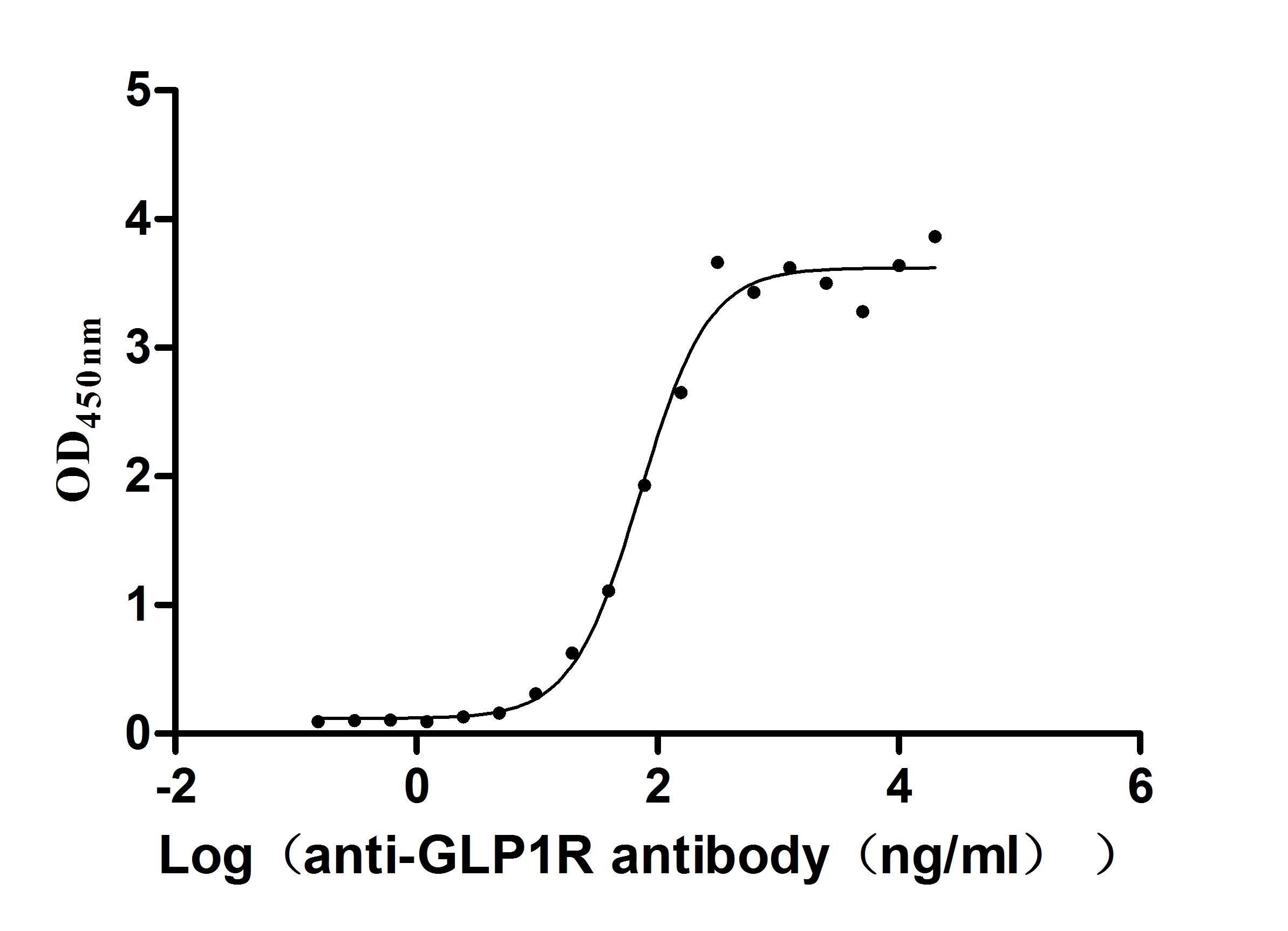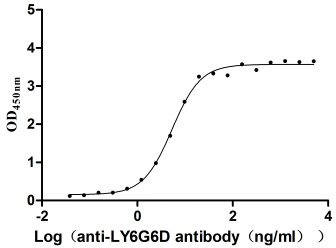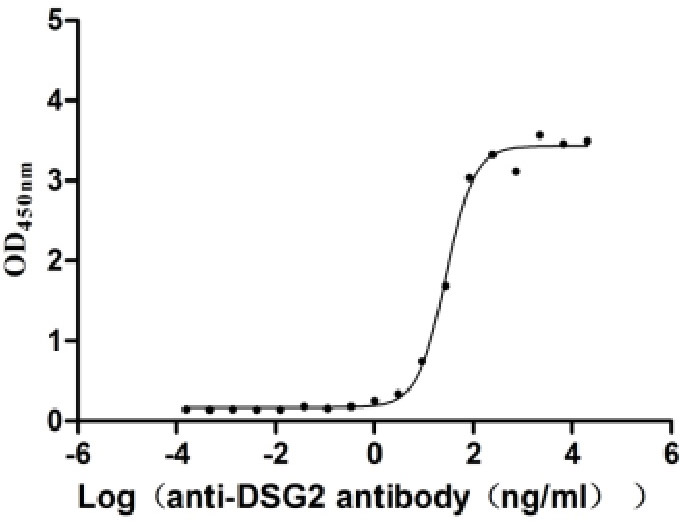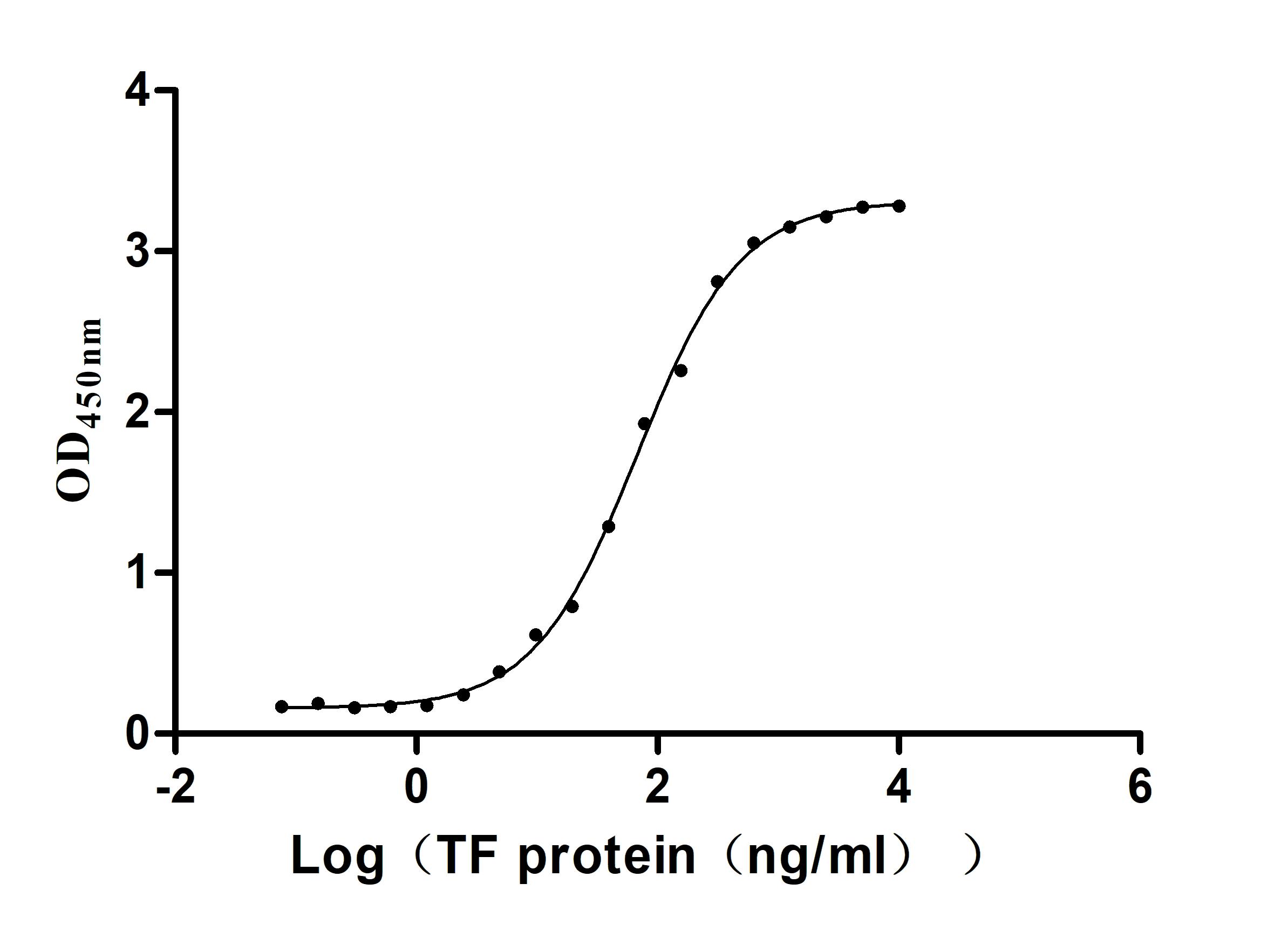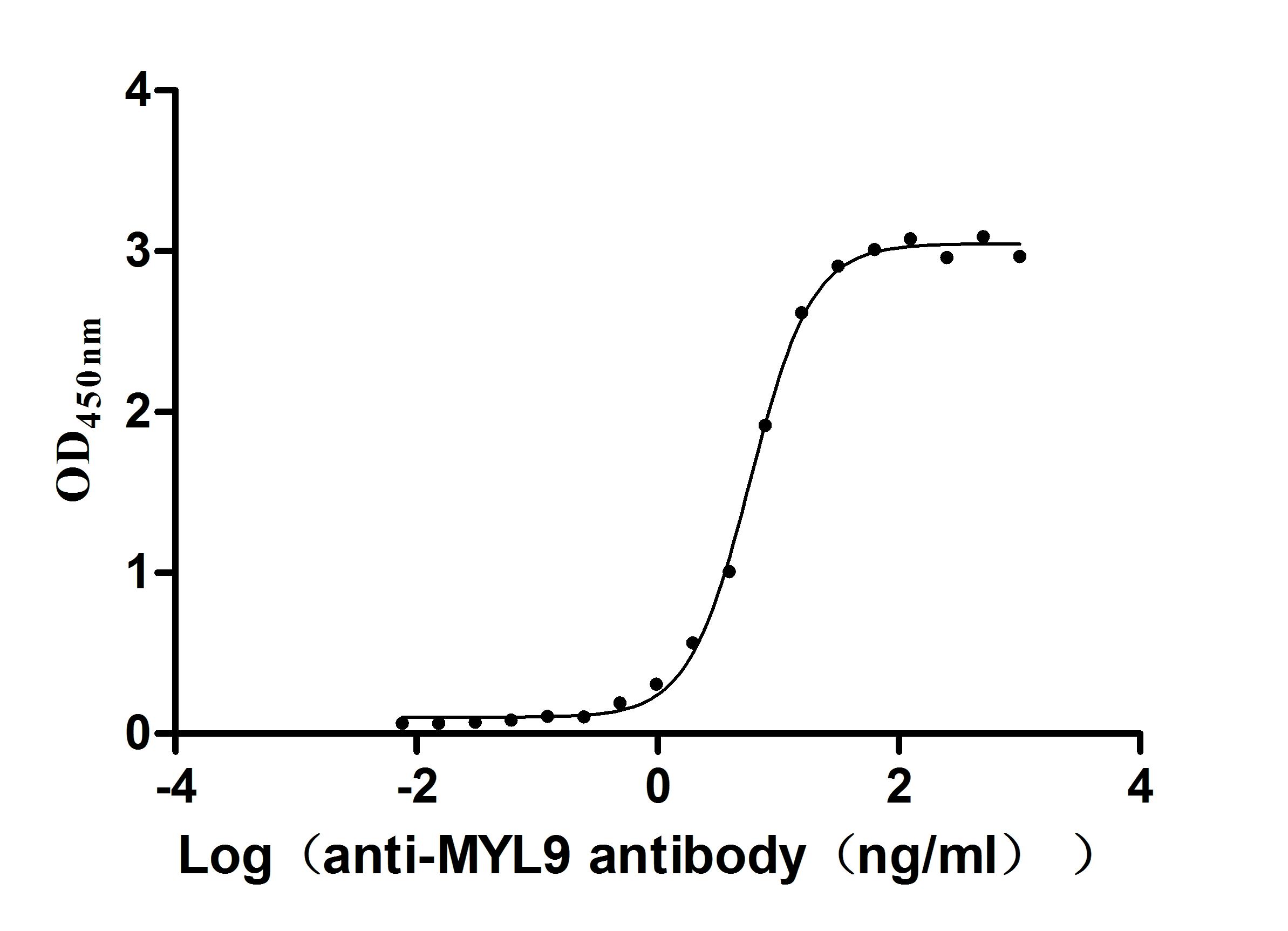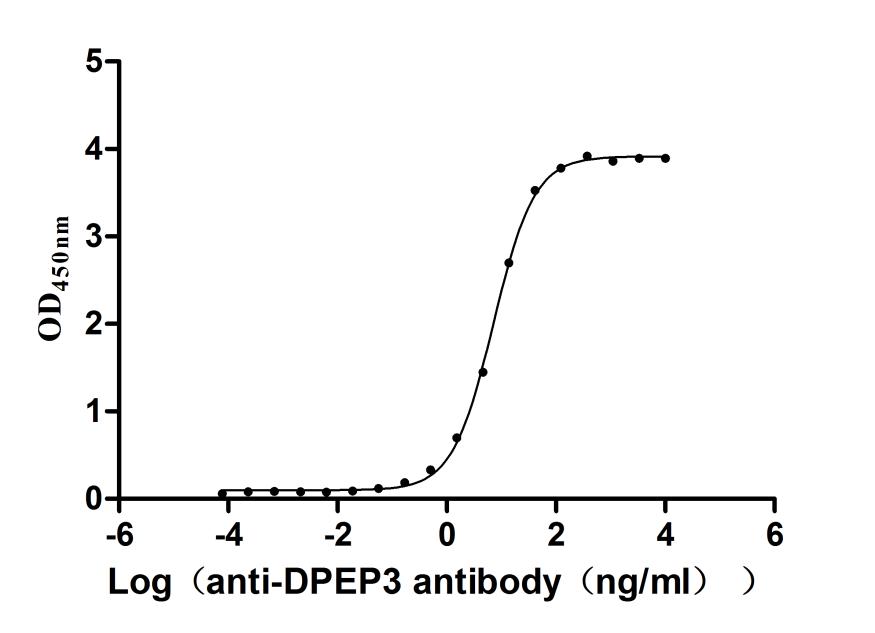Recombinant Mouse Histone-lysine N-methyltransferase MLL (Mll), partial
-
中文名称:小鼠Kmt2a重组蛋白
-
货号:CSB-YP014627MO
-
规格:
-
来源:Yeast
-
其他:
-
中文名称:小鼠Kmt2a重组蛋白
-
货号:CSB-EP014627MO
-
规格:
-
来源:E.coli
-
其他:
-
中文名称:小鼠Kmt2a重组蛋白
-
货号:CSB-EP014627MO-B
-
规格:
-
来源:E.coli
-
共轭:Avi-tag Biotinylated
E. coli biotin ligase (BirA) is highly specific in covalently attaching biotin to the 15 amino acid AviTag peptide. This recombinant protein was biotinylated in vivo by AviTag-BirA technology, which method is BriA catalyzes amide linkage between the biotin and the specific lysine of the AviTag.
-
其他:
-
中文名称:小鼠Kmt2a重组蛋白
-
货号:CSB-BP014627MO
-
规格:
-
来源:Baculovirus
-
其他:
-
中文名称:小鼠Kmt2a重组蛋白
-
货号:CSB-MP014627MO
-
规格:
-
来源:Mammalian cell
-
其他:
产品详情
-
纯度:>85% (SDS-PAGE)
-
基因名:
-
Uniprot No.:
-
别名:Kmt2a; All1; Hrx; Mll; Mll1Histone-lysine N-methyltransferase 2A; Lysine N-methyltransferase 2A; EC 2.1.1.354; ALL-1; Myeloid/lymphoid or mixed-lineage leukemia; Myeloid/lymphoid or mixed-lineage leukemia protein 1; Zinc finger protein HRX) [Cleaved into: MLL cleavage product N320; N-terminal cleavage product of 320 kDa; p320); MLL cleavage product C180; C-terminal cleavage product of 180 kDa; p180)]
-
种属:Mus musculus (Mouse)
-
蛋白长度:Partial
-
蛋白标签:Tag type will be determined during the manufacturing process.
The tag type will be determined during production process. If you have specified tag type, please tell us and we will develop the specified tag preferentially. -
产品提供形式:Lyophilized powder
Note: We will preferentially ship the format that we have in stock, however, if you have any special requirement for the format, please remark your requirement when placing the order, we will prepare according to your demand. -
复溶:We recommend that this vial be briefly centrifuged prior to opening to bring the contents to the bottom. Please reconstitute protein in deionized sterile water to a concentration of 0.1-1.0 mg/mL.We recommend to add 5-50% of glycerol (final concentration) and aliquot for long-term storage at -20℃/-80℃. Our default final concentration of glycerol is 50%. Customers could use it as reference.
-
储存条件:Store at -20°C/-80°C upon receipt, aliquoting is necessary for mutiple use. Avoid repeated freeze-thaw cycles.
-
保质期:The shelf life is related to many factors, storage state, buffer ingredients, storage temperature and the stability of the protein itself.
Generally, the shelf life of liquid form is 6 months at -20°C/-80°C. The shelf life of lyophilized form is 12 months at -20°C/-80°C. -
货期:Delivery time may differ from different purchasing way or location, please kindly consult your local distributors for specific delivery time.Note: All of our proteins are default shipped with normal blue ice packs, if you request to ship with dry ice, please communicate with us in advance and extra fees will be charged.
-
注意事项:Repeated freezing and thawing is not recommended. Store working aliquots at 4°C for up to one week.
-
Datasheet :Please contact us to get it.
靶点详情
-
功能:Histone methyltransferase that plays an essential role in early development and hematopoiesis. Catalytic subunit of the MLL1/MLL complex, a multiprotein complex that mediates both methylation of 'Lys-4' of histone H3 (H3K4me) complex and acetylation of 'Lys-16' of histone H4 (H4K16ac). Catalyzes methyl group transfer from S-adenosyl-L-methionine to the epsilon-amino group of 'Lys-4' of histone H3 (H3K4) via a non-processive mechanism. Part of chromatin remodeling machinery predominantly forms H3K4me1 and H3K4me2 methylation marks at active chromatin sites where transcription and DNA repair take place. Has weak methyltransferase activity by itself, and requires other component of the MLL1/MLL complex to obtain full methyltransferase activity. Has no activity toward histone H3 phosphorylated on 'Thr-3', less activity toward H3 dimethylated on 'Arg-8' or 'Lys-9', while it has higher activity toward H3 acetylated on 'Lys-9'. Binds to unmethylated CpG elements in the promoter of target genes and helps maintain them in the nonmethylated state. Required for transcriptional activation of HOXA9. Promotes PPP1R15A-induced apoptosis. Plays a critical role in the control of circadian gene expression and is essential for the transcriptional activation mediated by the CLOCK-ARNTL/BMAL1 heterodimer. Establishes a permissive chromatin state for circadian transcription by mediating a rhythmic methylation of 'Lys-4' of histone H3 (H3K4me) and this histone modification directs the circadian acetylation at H3K9 and H3K14 allowing the recruitment of CLOCK-ARNTL/BMAL1 to chromatin. Also has auto-methylation activity on Cys-3879 in absence of histone H3 substrate.
-
基因功能参考文献:
- Kmt2a is also important in memory formation PMID: 28723559
- Collectively, these data indicated that ATR or ATM inhibition represent potential therapeutic strategies for the treatment of AML, especially MLL-driven leukemias. PMID: 27625305
- Epigenomic profiling indicates an abnormal H3K79me2 pattern on MLL-fusion targeted genes, but the molecular mechanism underlying this epigenetic dependency is not well understood. PMID: 27151433
- NUP98-HOXA9 interacts with MLL via the NUP98 second FG repeat domain. In the absence of MLL (in knockout mice), NUP98-HOXA9-induced cell immortalization and leukemogenesis are severely inhibited. MLL is important for the recruitment of NUP98-HOXA9 to the HOXA locus and for NUP98-HOXA9-induced HOXA gene expression. MLL is crucial for NUP98-HOXA9 leukemia initiation. PMID: 28210005
- These results define an important role for MLL1 in regulating macrophage-mediated inflammation in wound repair and identify a potential target for the treatment of chronic inflammation in diabetic wounds. PMID: 28663191
- these results implicate an important role for MLL1-dependent epigenetic regulation of macrophage antimicrobial functions PMID: 28733487
- This study demonstrated that Kmt2a regulates synaptic plasticity in striatal neurons and provides an epigenetic drug target for anxiety and dopamine-mediated behaviors. PMID: 27485686
- Inactivation of Kmt2a in Men1-deficient mice accelerated pancreatic islet tumorigenesis and shortened the average life span. Increases in cell proliferation were observed in mouse pancreatic islet tumors upon inactivation of both Kmt2a and Men1. PMID: 27801610
- HoxBlinc RNA Recruits Set1/MLL Complexes to Activate Hox Gene Expression Patterns and Mesoderm Lineage Development. PMID: 26725110
- Set1 role in cellular reprogramming and its interactions with Dpy30,Myc,Sox2 and Ash2l reprogramming factors PMID: 26691508
- The present study examined the mechanism underlying the development of KMT2A (MLL)-rearranged infant leukemia in response to in utero exposure to etoposide in a mouse model. PMID: 26657054
- We have demonstrated that the Mll1 gene is critical to Th1 differentiation in humans and mice PMID: 26059830
- MLL is the key Taspase1 substrate whose cleavage is required for MMTV-neuinduced tumor formation. PMID: 25267403
- Data indicate that Meis homeobox 1 (MEIS1) is required for the maintenance of myeloid-lymphoid leukemia protein MLL-fusion gene leukemia, and hepatic leukemia factor (HLF)is a key downstream mediator of Meis1. PMID: 25740828
- mature prefrontal neurons critically depend on maintenance of Mll1-regulated methylation at a subset of genes with an essential role in cognition and emotion. PMID: 25834037
- Recruited MOF activity, and not the intrinsic HMT activity of MLL1, is central for the maintenance of HSC target genes. In addition, this work reveals a role for SIRT1 in opposing MLL1 function. PMID: 24813891
- Mouse and human cell/xenograft systems have been generated and used to understand how MLL-R (MLL1-1 rearrangement) alleles affect diverse pathways to result in a highly penetrant, drug-resistant leukemia. Review. PMID: 25264566
- MLL1 functions as a coactivator of HSF1 in response to HSP90 inhibition PMID: 24831003
- Results indicate that intra-molecular complex formation is a crucial maturation step whereas proteolytic cleavage is dispensable for mixed lineage leukemia (MLL)-dependent gene activation and proliferation in vivo. PMID: 24040009
- The loss of Mll1 has a distinct impact on cell proliferation, based on differentiation state of the hematopoietic stem/progenitor. PMID: 23974107
- Mll2, one of the six Set1/Trithorax-type H3K4 methyltransferases in mammals, is required for trimethylation of bivalent promoters in mouse embryonic stem cells, whereas Mll1 is redundant. PMID: 24423662
- a double knock-in of Mll(PTD/wt) and Flt3(ITD/wt) mutations induces spontaneous AML with an increase in DNA methyltransferases (Dnmt1, 3a, and 3b) and global DNA methylation index PMID: 24085765
- Cooperation of MLL/AF10(OM-LZ) with KRASG12C increased cell adhesion via upregulation of an adhesion G-protein-coupled receptor Gpr125. PMID: 23564351
- menin and MLL1 regulate distinct pathways during normal hematopoiesis, particularly in HSCs and B cells. PMID: 23908472
- Data indicate that isruption of the MLL-PAFc subunit, Cdc73 (Hrpt2) interaction selectively inhibits the proliferation of MLL leukemic cells. PMID: 23900238
- beta-catenin, CBP and Mll promote self-renewal and H3K4 tri-methylation in salivary gland tumour propagating cells. PMID: 23736260
- Arginine methylation of Pax7 by Carm1 functions as a molecular switch controlling the epigenetic induction of Myf5 during satellite stem cell asymmetric division and entry into the myogenic program. PMID: 22863532
- MLL1 is recruited to its target genes by activated NF-kappaB and regulates their transcription. PMID: 22623725
- MLL-AF9 could not initiate leukemia in Bmi1(-/-)Hoxa9(-/-) mice, which have further compromised HSC functions. PMID: 21624810
- This study demonstrated the predominant expression MEN1-related genes, particularly MLL and p27, in the endocrine organs, and a tissue-specific haploinsuffiency of MLL may lead to a decrease in levels of p27 and p18 mRNAs in endocrine organs. PMID: 22037578
- The dissociated MLL subunits are subjected to distinct degradation pathways and thus not likely to have separate functions unless the degradation mechanisms are inhibited. PMID: 21670200
- H3K4 trimethylation by MLL1 is required to establish a permissive chromatin state for circadian transcription. PMID: 21113167
- Developmentally induced Mll1 loss reveals defects in postnatal haematopoiesis. PMID: 20724987
- results identify MLL as a key constituent of the mammalian DNA damage response pathway PMID: 20818375
- MLL interacts directly with the polymerase associated factor complex (PAFc) via Paf1 and CTR9. PAFc augments MLL and MLL-AF9 mediated transcriptional activation of Hoxa9 and their interaction is essential for leukemogenesis. PMID: 20541477
- Specific recruitment of MLL1 requires multiple interactions and is a precondition for stable recruitment of MLL1 fusion proteins to HoxA9 in leukemogenesis. PMID: 20541448
- DNA binding by the CXXC domain of MLL, and protection against DNA methylation is essential for MLL fusion leukemia. PMID: 20010842
- molecular crosstalk between aberrant expression of Hox molecule(s) and activated Raf may have a key role in the MLL-fusion-mediated-leukemogenesis PMID: 19710696
- the MLL-AFX fusion protein transforms myeloid progenitors and interferes with forkhead protein function PMID: 12192052
- mechanism for oncogenic activation of MLL by forkhead family proteins designated FKHRL1 and AFX PMID: 12393557
- the MLL SET domain is a histone H3 lysine 4-specific methyltransferase whose activity is stimulated with acetylated H3 peptides PMID: 12453418
- existence in fused form with eleven nineteen leukemia disturbs hematopoietic lineage determination and transforms a biphenotypic lymphoid/myeloid cell PMID: 12642866
- Microarray hybridization experiments revealed 197 potential target genes that are differentially expressed, providing new and important clues about MLL functions. PMID: 12789274
- RNAi-mediated knockdown of Taspase1 results in the appearance of unprocessed MLL and the loss of proper HOX gene expression PMID: 14636557
- impact of Hoxa7 or Hoxa9 nullizygosity on hematopoietic progenitor compartments and their susceptibility to MLL-induced leukemias PMID: 15070702
- Extending the repertoire of the mixed-lineage leukemia gene MLL in leukemogenesis. Review. PMID: 15132992
- the CXXC DNA binding domain has a critical role in MLL-associated oncogenesis, most likely via epigenetic recognition of CpG DNA sites within the regulatory elements of target genes PMID: 15542854
- A permissive cellular environment is required for oncogenicity of Mll-associated translocations and Mll fusions can influence haematopoietic lineage commitment. PMID: 16096649
- A disruption of the Sept6, the translocation partner gene of MLL in 11q23 translocation, does not contribute to leukemogenesis by the MLL fusion gene. PMID: 16314519
- major function of Mll is to act at the chromatin level to sustain the expression of selected target Hox genes during embryonic development PMID: 16618927
显示更多
收起更多
-
亚细胞定位:Nucleus.; [MLL cleavage product N320]: Nucleus.; [MLL cleavage product C180]: Nucleus.
-
蛋白家族:Class V-like SAM-binding methyltransferase superfamily, Histone-lysine methyltransferase family, TRX/MLL subfamily
-
数据库链接:
STRING: 10090.ENSMUSP00000002095
UniGene: Mm.2389
Most popular with customers
-
Recombinant Human Tumor necrosis factor receptor superfamily member 9 (TNFRSF9), partial (Active)
Express system: Mammalian cell
Species: Homo sapiens (Human)
-
Recombinant Human C5a anaphylatoxin chemotactic receptor 1 (C5AR1)-VLPs (Active)
Express system: Mammalian cell
Species: Homo sapiens (Human)
-
Recombinant Human Glucagon-like peptide 1 receptor (GLP1R), partial (Active)
Express system: Mammalian cell
Species: Homo sapiens (Human)
-
Recombinant Macaca fascicularis lymphocyte antigen 6 family member G6D (LY6G6D) (Active)
Express system: Yeast
Species: Macaca fascicularis (Crab-eating macaque) (Cynomolgus monkey)
-
Recombinant Human Desmoglein-2 (DSG2), partial (Active)
Express system: Mammalian cell
Species: Homo sapiens (Human)
-
Recombinant Human Serotransferrin(TF) (Active)
Express system: Mammalian cell
Species: Homo sapiens (Human)
-
Recombinant Human Myosin regulatory light chain 12A (MYL12A) (Active)
Express system: E.coli
Species: Homo sapiens (Human)
-
Recombinant Human Dipeptidase 3(DPEP3), partial (Active)
Express system: Mammalian cell
Species: Homo sapiens (Human)


